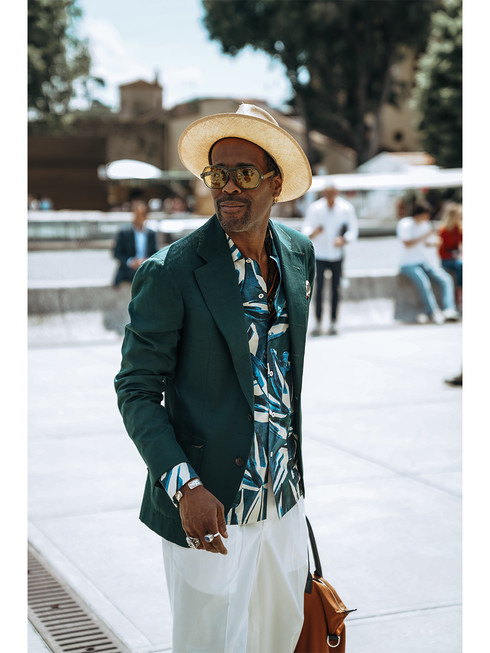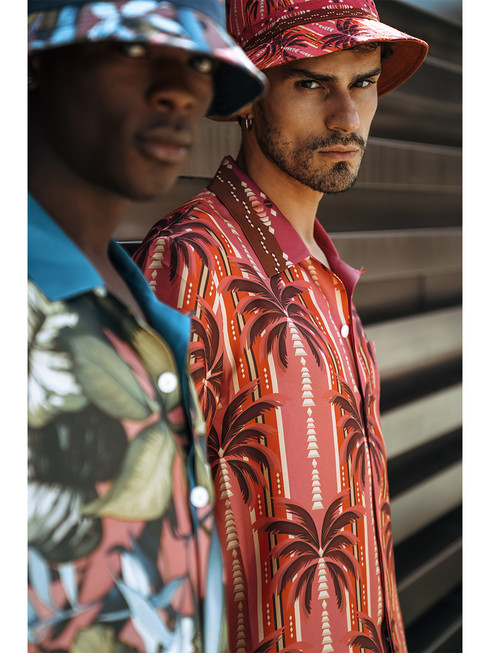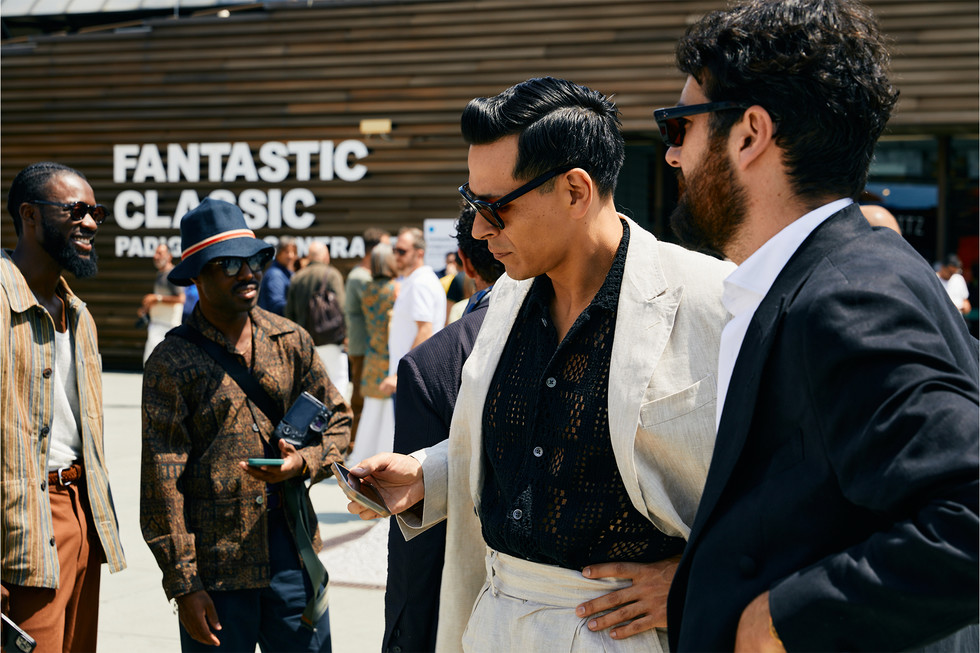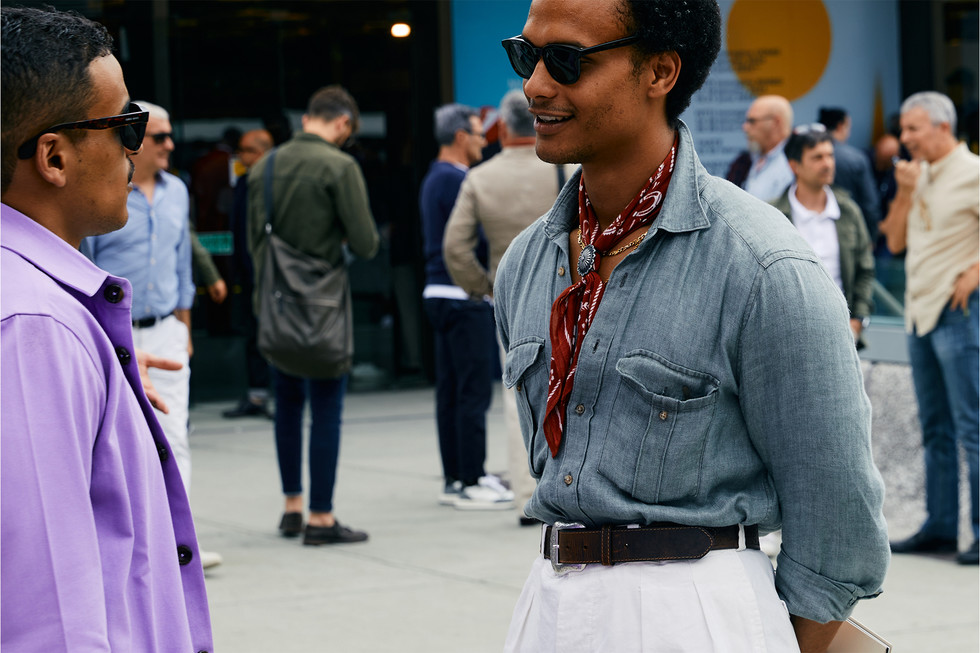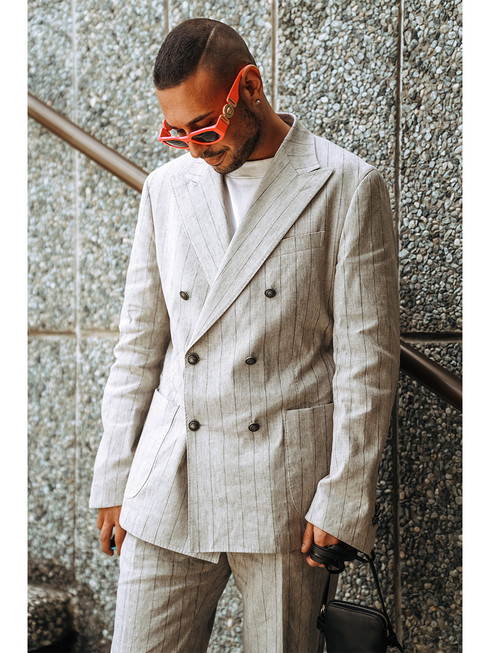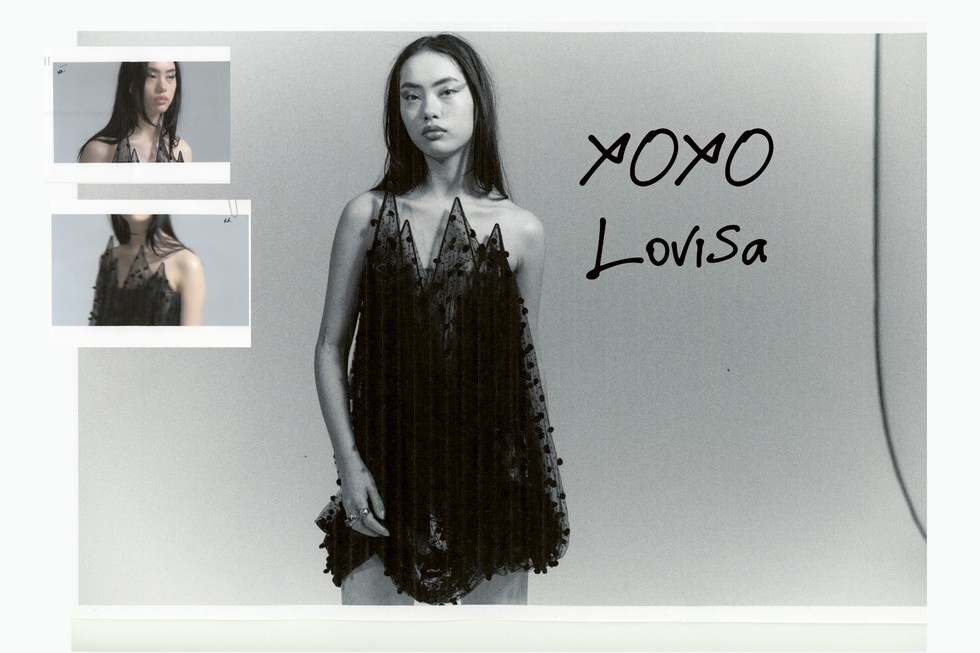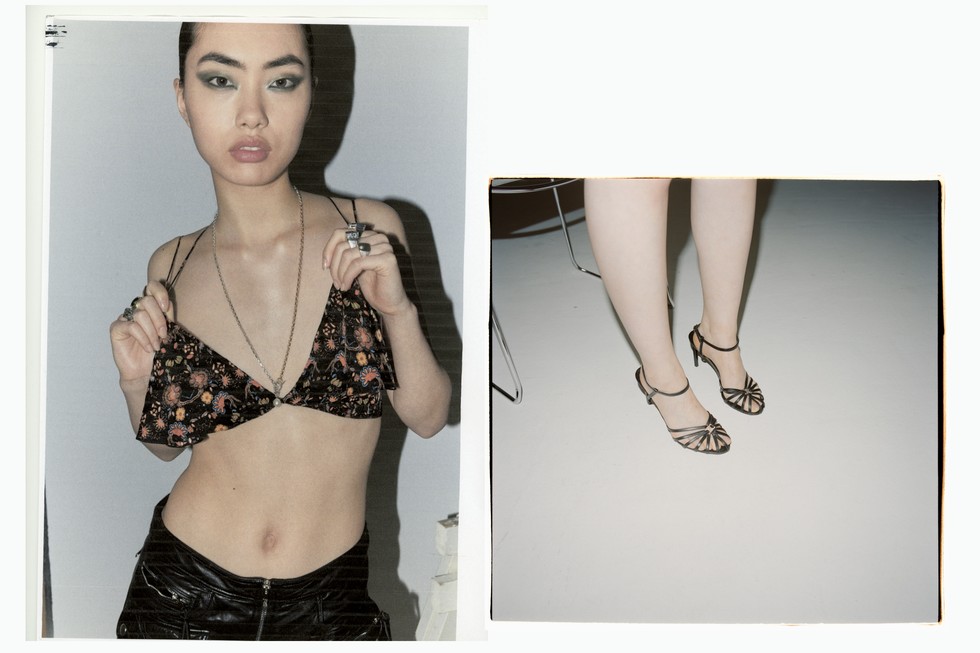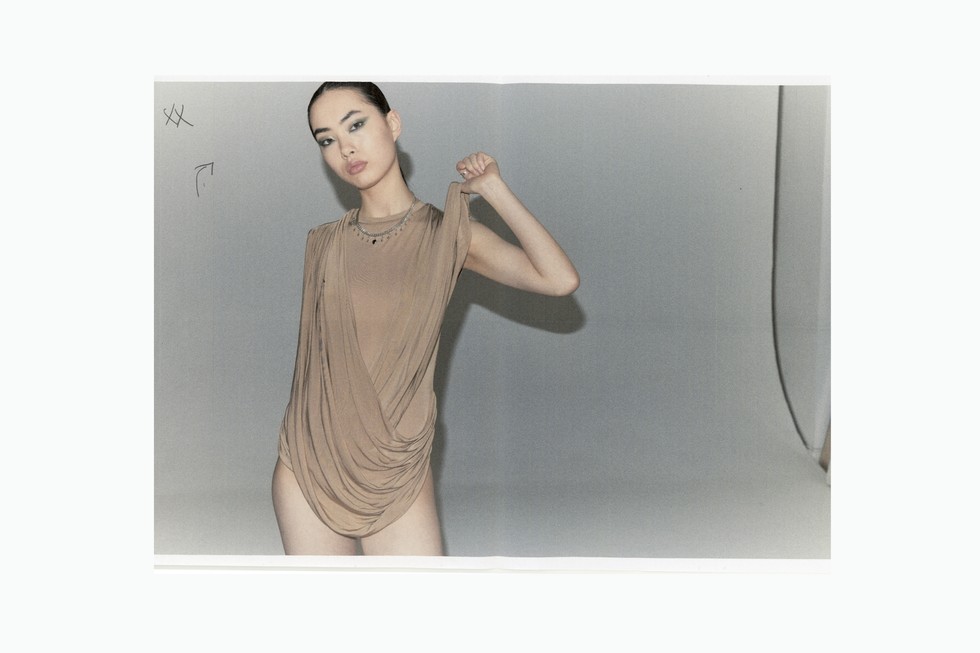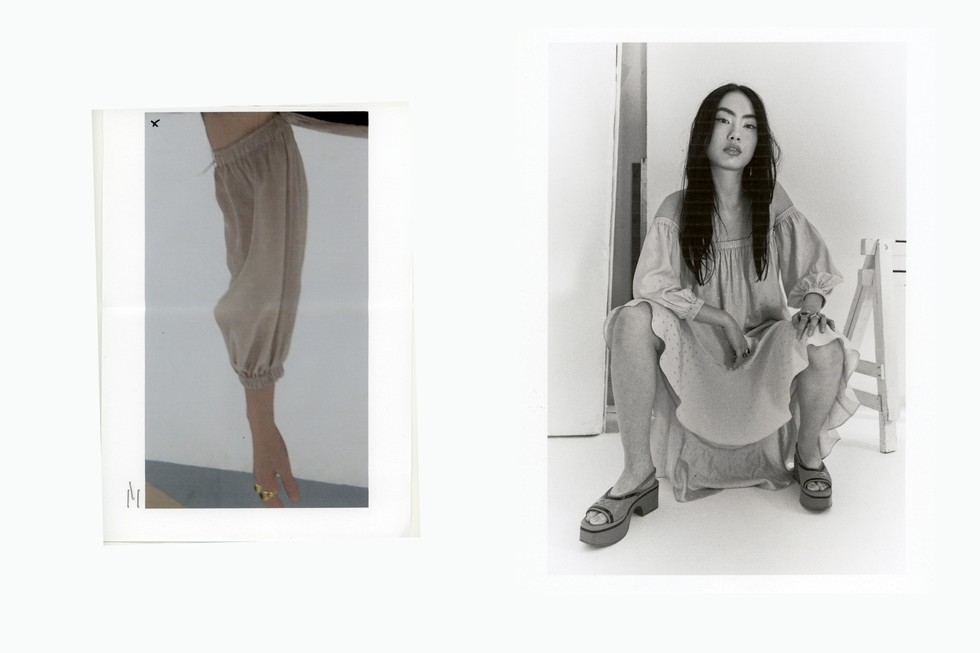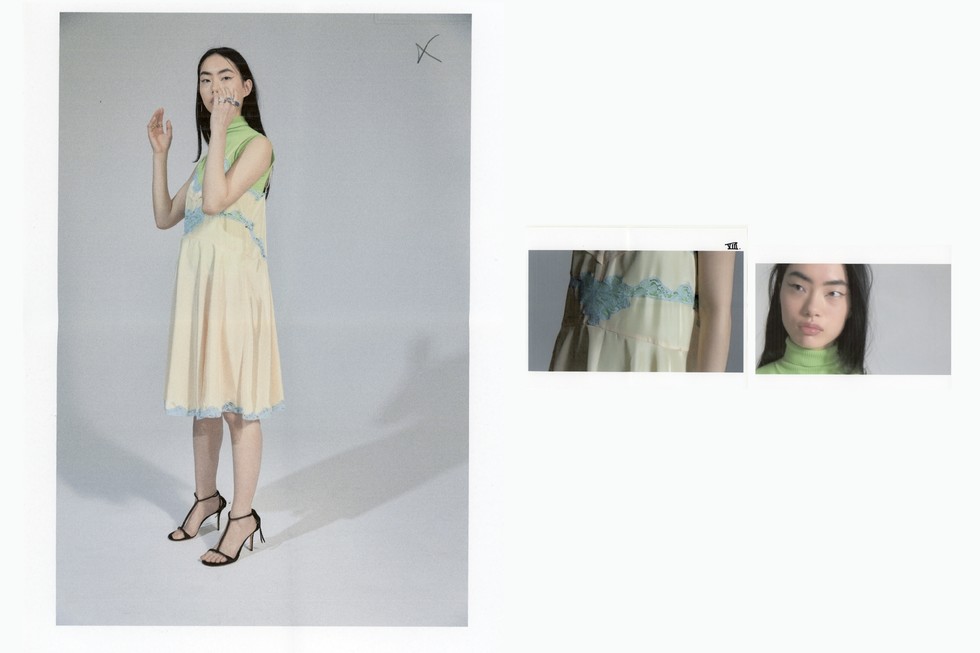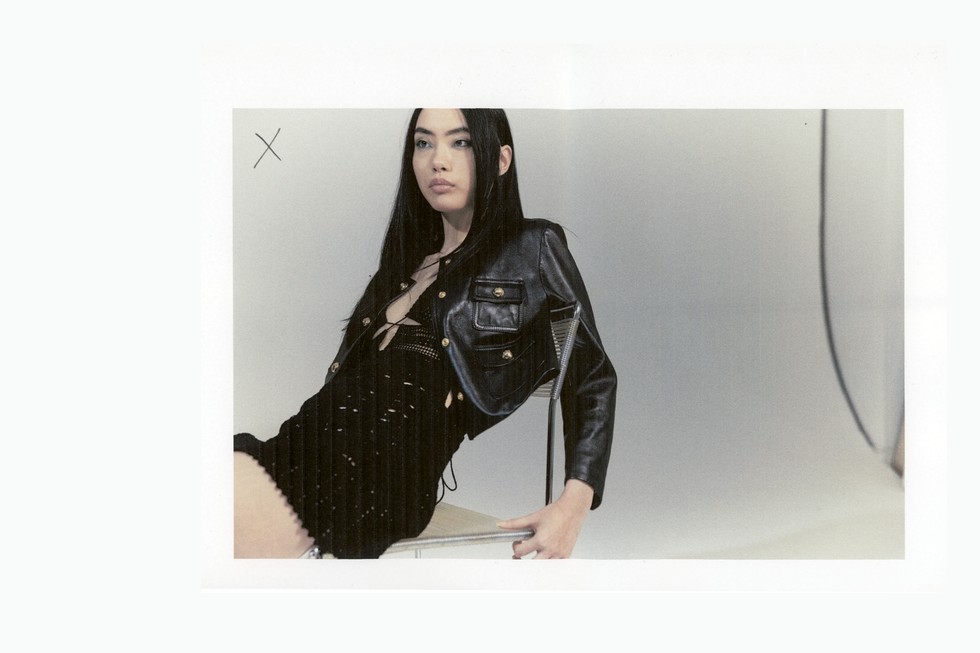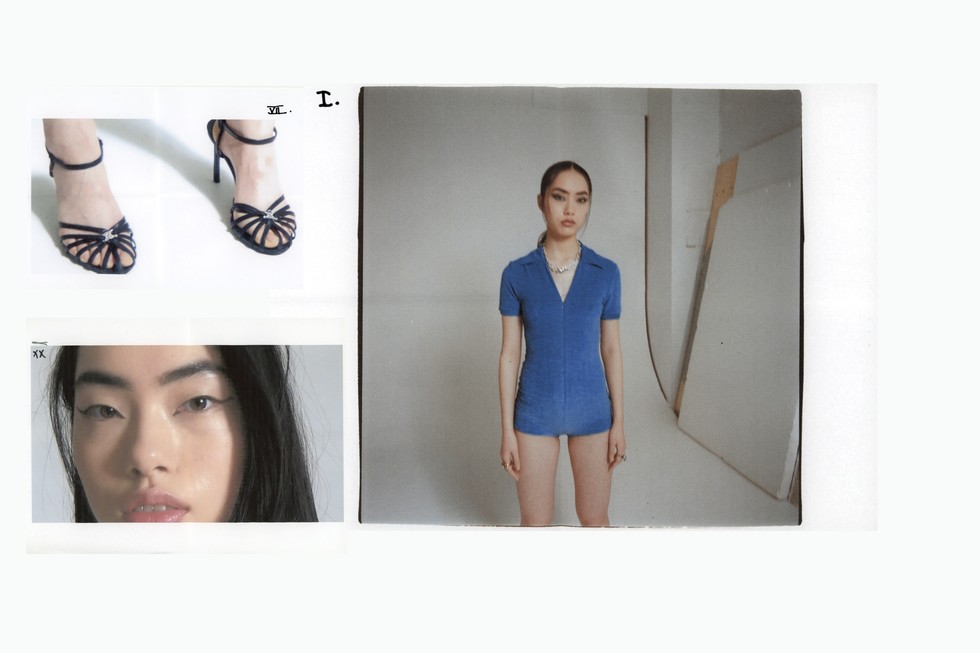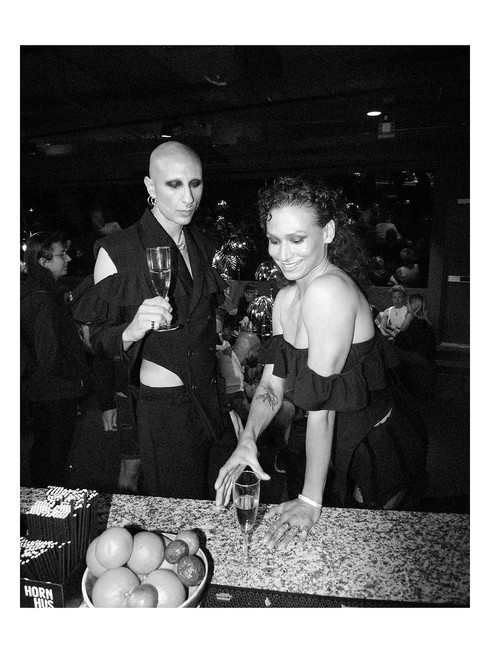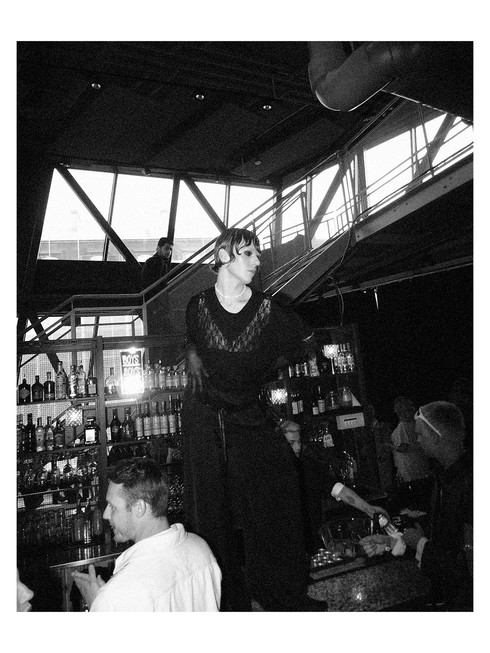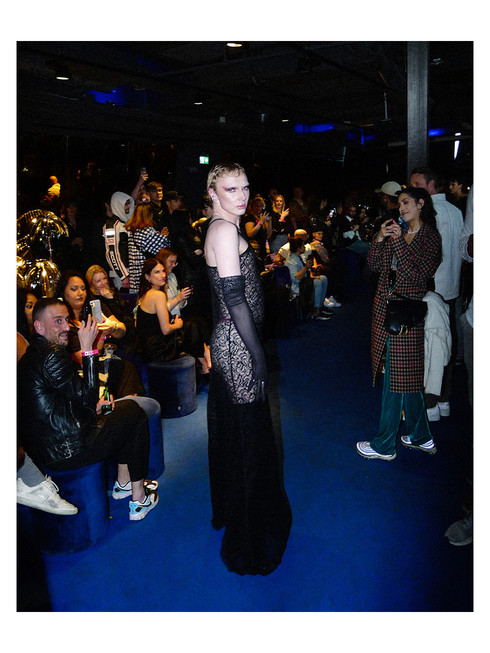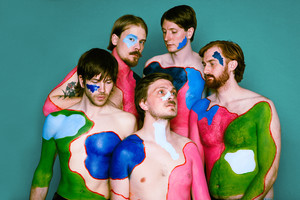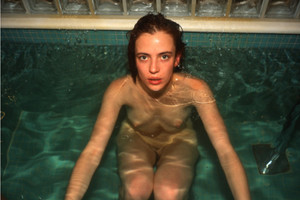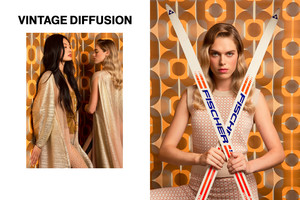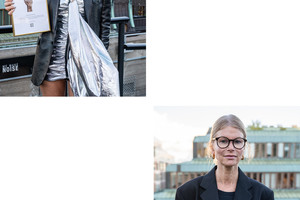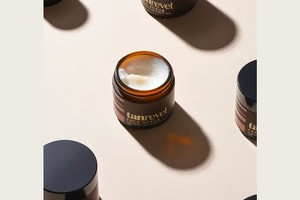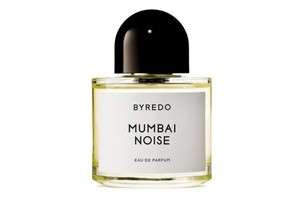Pitti Uomo 104 and The Case Against Fashionable Sportswear
Written by Philip Warkander by pariA couple of months ago, I was having coffee with an old friend, currently living in Switzerland. She told me of her 16-year-old son’s emerging interest in fashion. He travels regularly to nearby Milan to visit traditional tailors and menswear shops that have been in business for decades, selling traditional haberdasheries. Obviously, as a teenager he had limited means, but what he had, he spent on conservative clothing. I was reminded of this story when recently visiting this summer’s edition of Pitti Uomo in Florence.
The menswear fashion event has a reputation of being a platform for very unfortunate fashion choices among some of its male visitors. Many years ago, exhibitors would on occasion go out for a cigarette. Leaning against the rails, smoking, and chatting with each other while fashionably dressed, they became the object of early street style-photographers. It didn’t take long until people started to travel to Pitti Uomo in the hopes of having their picture taken. Such a photo could help make them famous for their sense of style and thus had a potential economic value (in the world of influencing). In order to get the attention of the photographers, these aspiring men dressed outlandishly in garish outfits, hoping that their clothes would be loud enough to go viral.
The male peacocks, strutting slowly back and forth in the hope of someone snapping their photo, has since become an unfortunate Pitti Uomo-cliché, a caricature of the narcissistic tendencies so often associated with being interested in fashion. I have visited the fair on quite a few occasions, and before the COVID-19 pandemic, sports-inspired streetwear fashion was clearly an important part of this ugly trend. Now, it is all but wiped out. No chunky Balenciaga sneakers, no college shirts with large prints. Instead, the style among the fair’s visitors is dressed up, in a casual yet refined way.
In 2005, Riccardo Tisci was appointed creative director at Givenchy. He transformed the French luxury brand, spearheading the new trend of merging fashion and sportswear. Shorts over leggings, and T-shirts with applications of pearls and lace, became an integral part of menswear. Tisci worked for Givenchy until 2017 (when he left for Burberry). This means that for someone like my friend’s son, born two years after Tisci’s Givenchy takeover, sportswear was the trend of his childhood. Like most people, as he grew older, he naturaly wanted to change his appearance, emphasizing the difference between what had been the style of his childhood and his current adolescent self. And as he grew up in the era of fashionable sportswear, he naturally turned to a more traditional aesthetics; well-fitting suits, exclusive socks, handmake shoes. To him, this is exciting and new, a welcome contrast to the sportswear he has been surrounded by all his life.
The example of my friend’s son is anecdotal, but all around me at Pitti Uomo, I saw the same trend multiplied. There were no traces of the sportswear megatrend, so fashionably only a few years ago. Obviously, not everyone had turned to the more traditional style of my friend’s son – I also saw versions of the relaxed Côte d’Azur-lifestyle championed by Jacquemus, a few still sporting the Belgian deconstructed look of the 1990s, as well as plenty of Prada labels – but it was clear that in this crowd of trend-conscious men, an invested interest in sneakers or wearing your training gear to a dinner party is today a clear faux-pas.
Our understanding of current events is determined by where we are in life. For those older, it can be difficult to understand why streetwear seems so unfashionable to the younger generation. But for those who have never known anything else than sneakers and T-shirts, a suit can seem a more radical option. And so, fashion continues to change, like a pendulum that swings from side to side.

